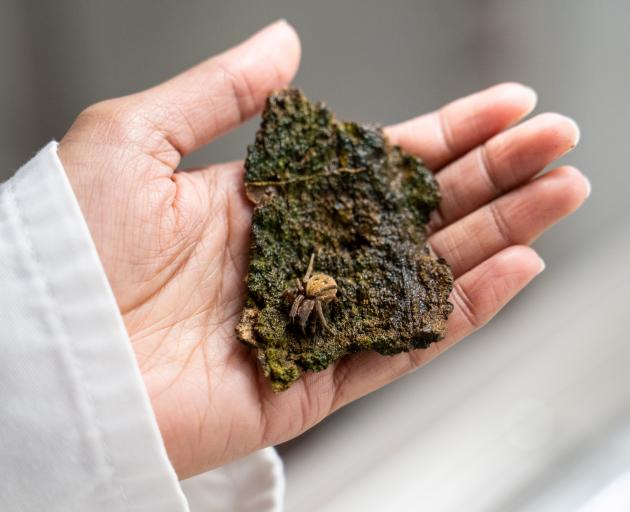Science
Parasitic Worms Transform Spiders into “Zombie” Hosts in NZ

A unique phenomenon has emerged in New Zealand where parasitic worms, known as mermithids, are transforming spiders into what researchers describe as “zombies.” Usha Mendis, a PhD student at Lincoln University, is investigating this unsettling relationship between the nematodes and various spider species. Her research highlights the ecological implications of these parasites, which target a range of invertebrates including caddisflies, mayflies, and grasshoppers.
Mendis has already identified three distinct types of spiders that carry these parasites. She emphasizes the potential risk this poses to local biodiversity, noting that over 90% of New Zealand’s spider population is endemic. “If something were to happen to them, it would not be good for our biodiversity,” she stated. Spiders play a crucial role in the food chain, and the presence of these parasitic worms disrupts their natural function.
The transformation process for the infected spiders is both slow and devastating. Mendis explains that infected spiders often exhibit abnormal physical changes, such as enlarged limbs and swollen abdomens, making them appear “zombie-like.” “Their legs get shorter but thicker, while their abdomen expands,” she noted. Unfortunately, the only definitive method to determine if a spider is infected is to observe its death and the emergence of the nematode.
Despite researchers understanding how the nematodes exit their hosts, the entry process remains a mystery. Mendis is focused on uncovering how these parasites infect spiders in the first place. “They can’t live without a host. They consume the energy and nutrients of the host and grow inside it,” she explained. The nematodes require moisture to advance to the next stage of their life cycle, which drives the infected spiders to seek out damp environments.
As a result, many spiders are found drowned, unable to survive the parasite’s lifecycle. Even if a spider manages to endure the emergence of the nematode, it is unlikely to survive long after. Mendis is utilizing water traps to capture these nematodes, aiming to gather more data on their lifecycle and impact.
The mermithids were first reported in New Zealand only 35 years ago, and significant research is still needed to fully understand their intricate relationship with local spider populations. Mendis encourages the public to reconsider their perceptions of spiders, emphasizing their essential role within the ecosystem. “Spiders may look disruptive and creepy, but they’re not the enemy. They’ve got their own problems to deal with,” she remarked.
As Mendis continues her research, the hope is to shed light on these parasitic relationships and their broader implications for New Zealand’s biodiversity. Understanding this complex interaction will be vital in preserving the delicate balance of the ecosystem.
-

 World4 months ago
World4 months agoTest Your Knowledge: Take the Herald’s Afternoon Quiz Today
-

 Sports4 months ago
Sports4 months agoPM Faces Backlash from Fans During Netball Trophy Ceremony
-

 Lifestyle4 months ago
Lifestyle4 months agoDunedin Designers Win Top Award at Hokonui Fashion Event
-

 Entertainment4 months ago
Entertainment4 months agoExperience the Excitement of ‘Chief of War’ in Oʻahu
-

 Sports4 months ago
Sports4 months agoLiam Lawson Launches New Era for Racing Bulls with Strong Start
-

 World5 months ago
World5 months agoCoalition Forms to Preserve Māori Wards in Hawke’s Bay
-

 Lifestyle4 months ago
Lifestyle4 months agoDisney Fan Reveals Dress Code Tips for Park Visitors
-

 Health4 months ago
Health4 months agoWalking Faster Offers Major Health Benefits for Older Adults
-

 Politics4 months ago
Politics4 months agoScots Rally with Humor and Music to Protest Trump’s Visit
-

 Top Stories5 months ago
Top Stories5 months agoUK and India Finalize Trade Deal to Boost Economic Ties
-

 Health2 months ago
Health2 months agoRadio Host Jay-Jay Feeney’s Partner Secures Visa to Stay in NZ
-

 World5 months ago
World5 months agoHuntly Begins Water Pipe Flushing to Resolve Brown Water Issue









